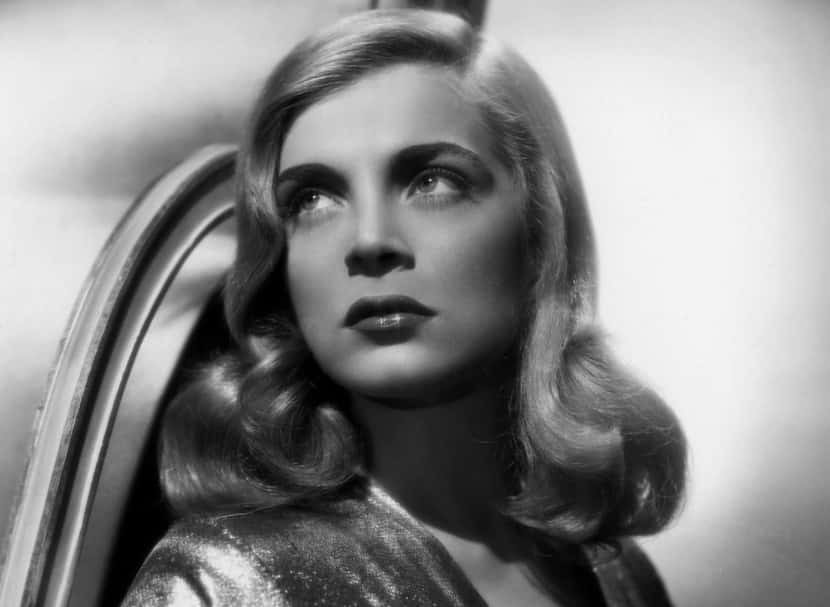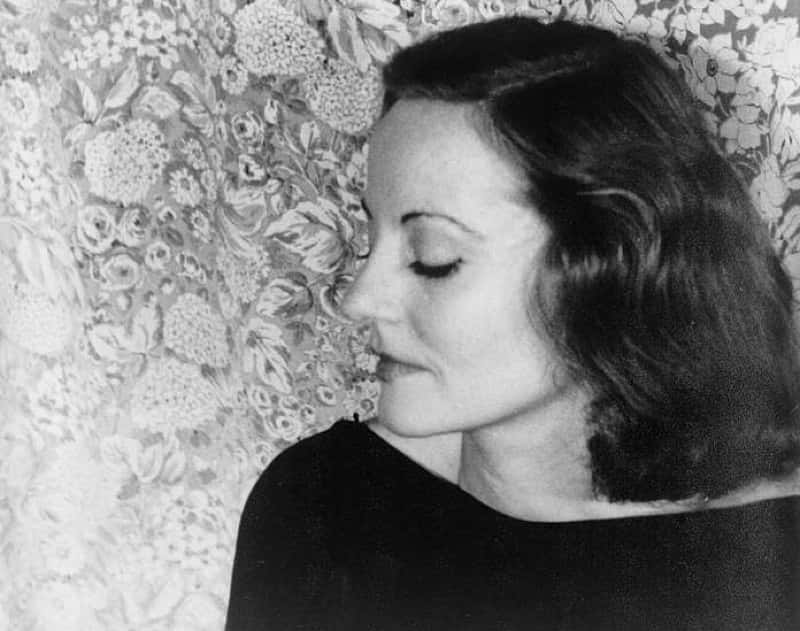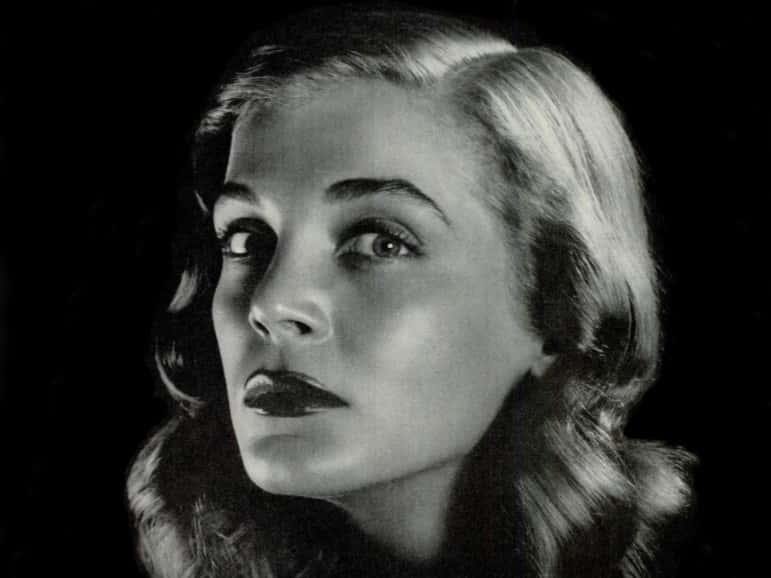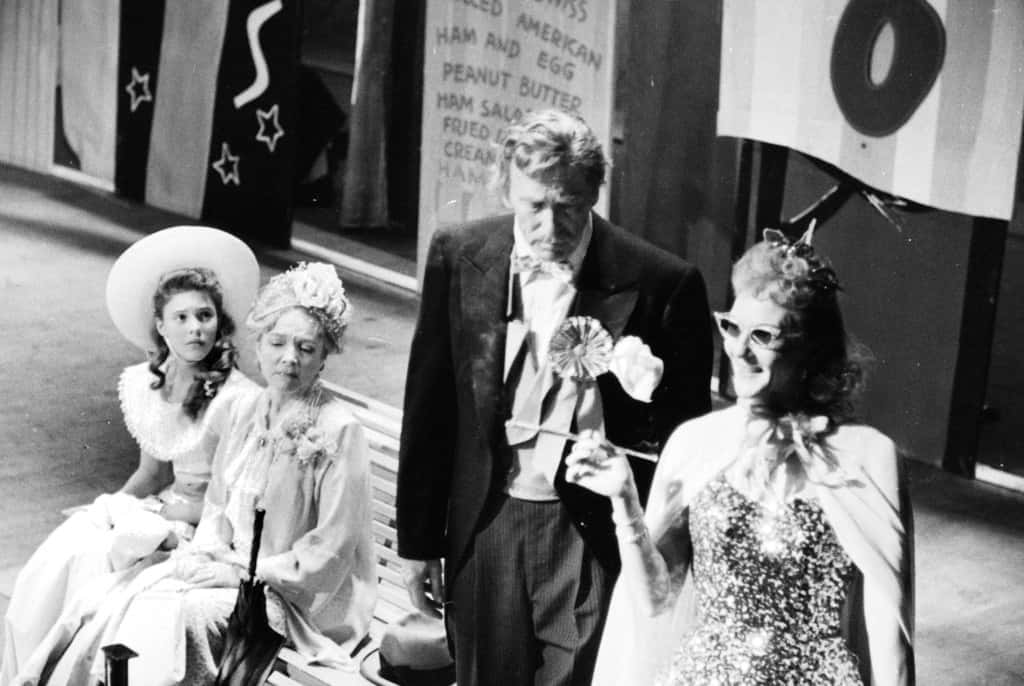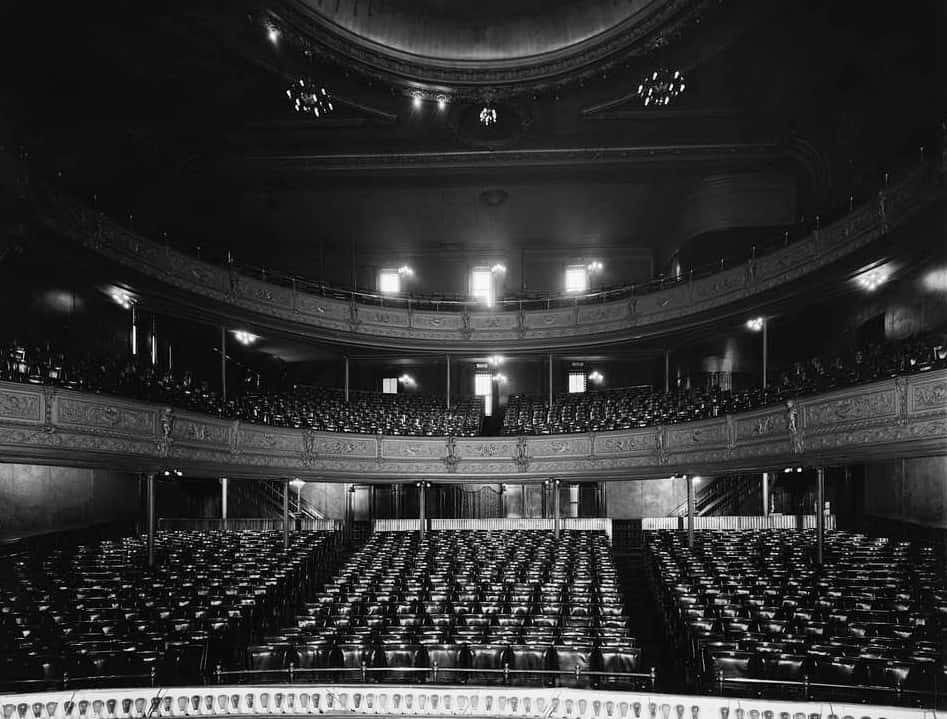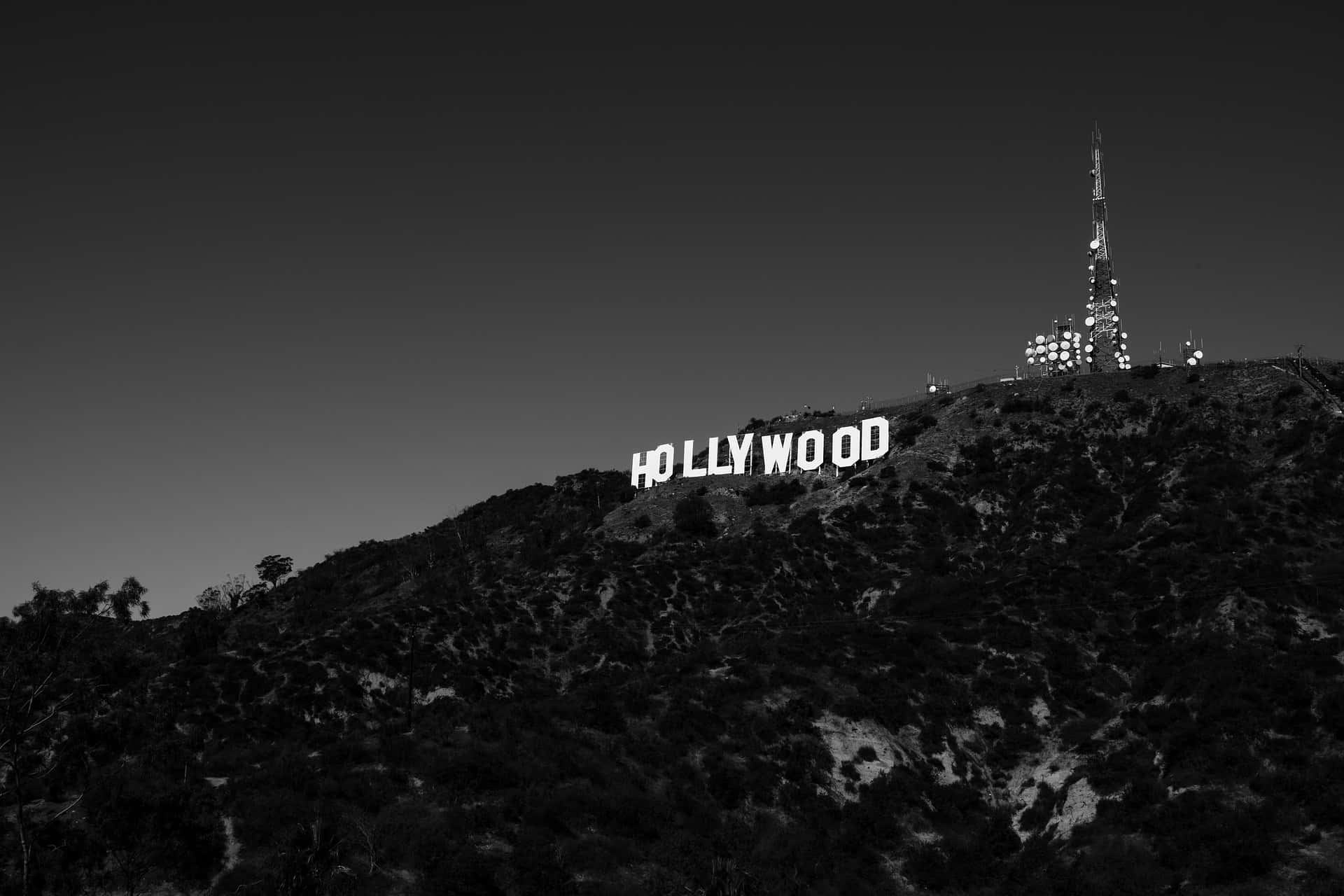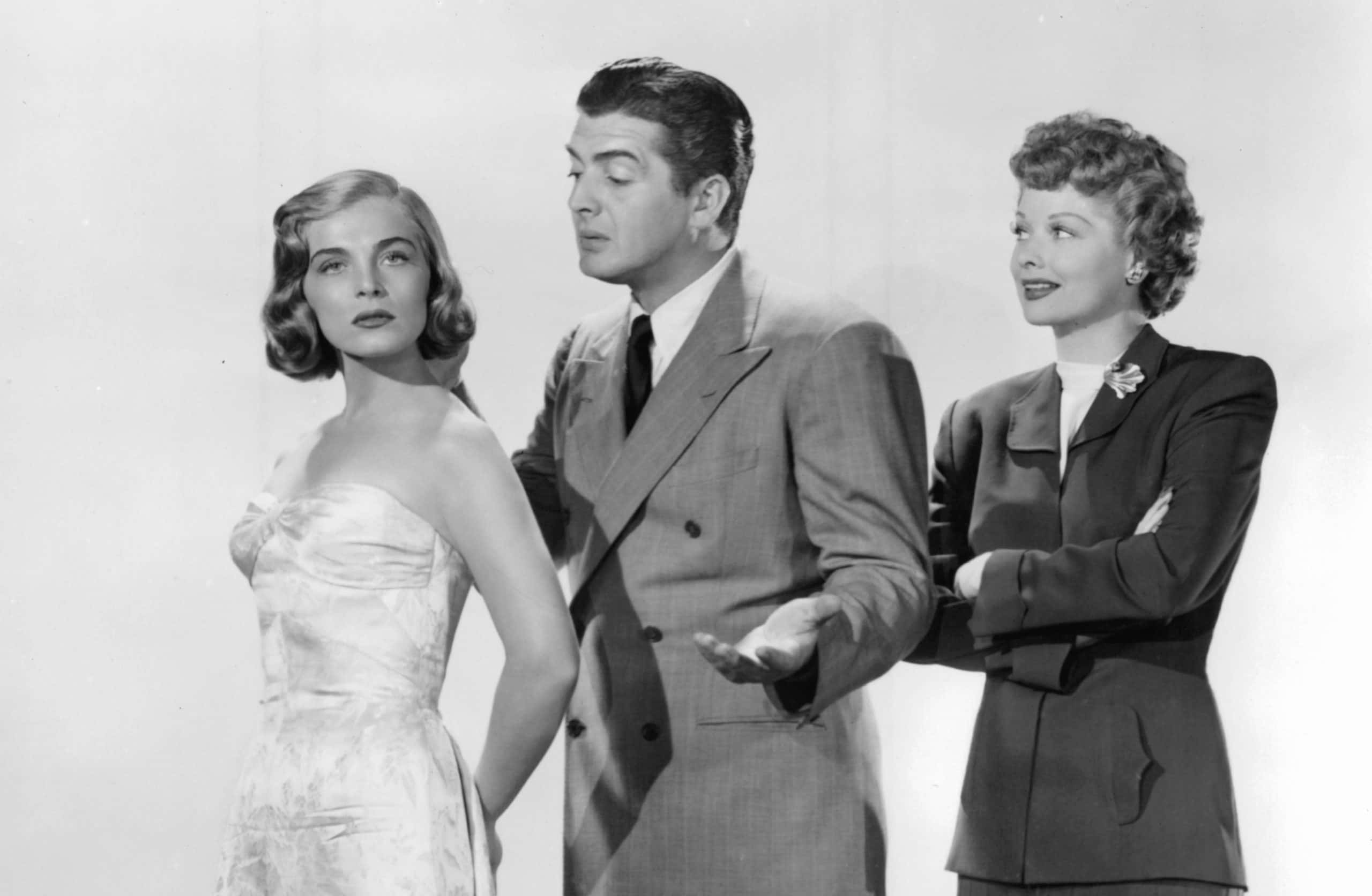Lana Turner, Rita Hayworth, Barbara Stanwyck: all stars that conjure up images of shadow-filled alleys and men in trouble. These are the women of film noir, but what about Lizabeth Scott? This forgotten noir queen got the nickname "The Threat" because no one stood in the way of her success—on-screen or off. Scott’s life was as thrilling as the plots of her films, and her near-disappearance from film history was the biggest mystery of them all.
1. She Didn’t Like Her Name
Anyone, with even a passing interest in the golden age of Hollywood, will easily pick out the name Lizabeth Scott as a stage name. It just sounds too perfectly show biz. The truth is that in 1922, Scott entered this world as Emma Matzo in Scranton, Pennsylvania. Her father owned Matzo Market and young Emma attended Marywood Seminary for Catholic girls.
These humble beginnings went on to serve as a shocking contrast against her scandalous later years, as we’ll see…
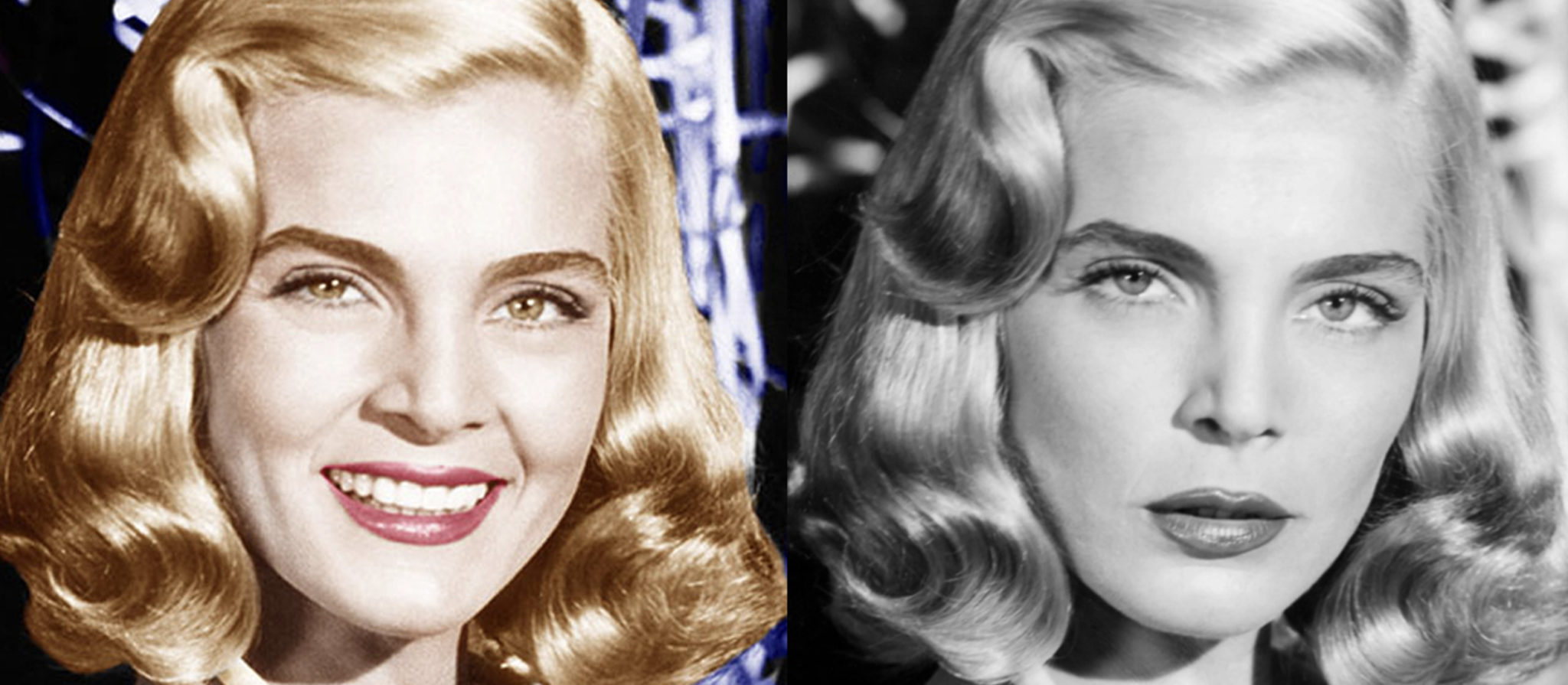
2. She Took A Big Risk
After appearing in some local theater productions, Lizabeth Scott had caught the acting bug. She soon became taken with a burning desire she’d do anything to achieve. Scott decided that she wanted to act on Broadway. Well, Broadway was, and still is, located in New York City. So how does a 17-year-old girl from Scranton get to the Big Apple? With a little bit of daddy’s help, of course.
3. She Borrowed From Royalty
Scott had a dream and her father, the grocery store owner, helped her achieve it. He set her up at the Ferguson Residence for Women—to make sure everything was on the up and up. While there, Emma Matzo read about Mary, Queen of Scots and Elizabeth I. She liked the two names, Scot and Elizabeth, and made them her own. She later dropped the "E" in an effort to stand out in the crowd of acting hopefuls—and it worked.
4. She Hit The Road
The comedy duo Olsen and Johnson were headlining in the zany musical revue Hellzapoppin, and they were also looking for a new actor to accompany them on the road. They hired Scott and she immediately left New York City to tour 63 cities over 18 months. But how was singing, dancing, and making corny jokes going to get Scott to Broadway? In short, it wasn’t.
5. She Took The Stage
After playing second fiddle to a couple of almost-literal clowns, Scott was ready for her first starring role. It came in 1942, when the tour ended and she returned to New York. It was an off-Broadway show called Rain. Now that Scott was a serious actor, she was ready to hear what the critics thought of her—but there was just one problem.
6. No One Showed Up
Not one single critic attended any of Scott’s performances of Rain—or at least none of them wrote a review about it. Maybe it was just that bad. Scott was still so far from achieving her dream of acting on Broadway. But don’t worry, there was someone else in the audience that was even better than a critic.
7. She Came Close
Broadway producer Michael Myerberg did see Scott’s performance in Rain, and she must have impressed him. He wanted to hire her as an understudy for megastar performer Tallulah Bankhead in the Broadway play The Skin of Our Teeth. This was a big deal, as it got Scott at list in the vicinity of her dream. Unfortunately, there was something underhanded about this job as an understudy.
8. She Was A Threat
Myerberg was having a difficult time with the temperamental Bankhead. She often refused to show up for rehearsal, which made life difficult for Myerberg, the other actors, and the crew. So, Myerberg had an idea: hire Scott as an understudy for the role of Sabina and threaten to replace Bankhead when she didn’t show up for rehearsal. Yup, he was just using Scott.
A great plan—except Myerberg forgot one important detail.
9. She Raised A Star’s Ire
Lizabeth Scott still thought that she was getting her big break—but she was so, so wrong. Bankhead was a pro at being difficult, so she had a very important clause written into her contract: the producer could not hire an understudy for her role. When Myerberg hired Scott as an understudy, he was breaching Bankhead’s contract. The hot-tempered Bankhead found out, and she was furious not only at Myerberg—but at Scott as well.

History's most fascinating stories and darkest secrets, delivered to your inbox daily.
10. She Got Treated Like A Dog
Bankhead was nothing but rude to Scott during the run of The Skin Of Our Teeth. Bankhead didn’t talk to Scott—she simply barked—and that was only when she was telling Scott what to do. Scott, who was new to working on Broadway, must have been more than a little frightened of her domineering co-star—or so you’d think.
She had only a Vaudeville tour and one off-Broadway show under her belt, and yet she did something most actors wouldn’t even dream of doing: she stood up to Tallulah Bankhead.
11. She Asked For A Word
She'd had enough of the overpowering Bankhead, so she decided to confront the tyrannical actor. Scott had only one request, and she must have been a nervous Nelly making it. She simply requested that Bankhead, when asking her to do something, use the word "please". Bankhead must have thought she’d misheard. No one ever talked back to the great Tallulah Bankhead.
12. She Stayed In The Shadows
To everyone’s astonishment, Bankhead listened to Scott, and started saying "please". But the rivalry between the two didn't end there. Bankhead soon got her revenge. She never missed a single performance of the play. This meant Scott, as her understudy, wouldn’t have her moment to shine on Broadway. Scott however, was not one to give up that easily.
13. She Fought Back
Sometime during the run of The Skin of Our Teeth, Scott began an affair with the producer who’d discovered her, Michael Myerberg. It’s hard to say if there were true feelings there, or if Scott was using him in her battle against Bankhead. Whichever is true, Bankhead was feeling the pressure of two against one. With all the worrying, she got an ulcer and had to quit the show. Finally, it was Scott’s moment to take center stage—or was it?
14. She Got Blind-Sided
Scott had played her cards well. Having the producer in her bed would solidify her chances of getting the lead role—but instead, he dealt Scott a heartbreaking act of betrayal. To Scott’s shock and amazement, he hired another actor, Miriam Hopkins, to take the Bankhead role and decided to keep Scott as the understudy. Scott’s plan had crashed and burned.
15. She Was Desperately Needed
A few months after Scott had already quit as the understudy for the play, Myerberg was in a bind. He had a sick actor on his hands, and no understudy for the role. He reached out to Scott, and begged for her to do the role one more time. Scott must have had bitter feelings toward Myerberg, since he’d already overlooked her as the star of the show.
But Scott was a class act, and agreed to help him out.
16. She Saved The Day
On August 30, 1943, Lizabeth Scott took to the stage and played Sabina in The Skin of Our Teeth. It must have felt like a nice bookend to the whole Scott versus Bankhead debacle. Scott wowed audiences that night. It may have felt like the end of an era for Scott. Little did she know that this performance was going to take her in a new and much more exciting direction.
17. She Met A Hit-Maker
In the audience that night was Joe Russell, a friend of Casablanca producer Hal B. Wallis. Russell told Wallis about Scott’s amazing performance, and an interview was quickly set up. Surely Scott was over the moon: this was the man who’d worked with Humphrey Bogart and Ingrid Bergman. This could be her big transition from Broadway to Hollywood.
Yet fate—and the role of Sabina—once again stepped in.
18. She Got A Shock
After arranging to meet with Wallis, Scott went home to prepare for the interview. There, she received a telegram with a stunning message. Producers once again needed her for the role of Sabina. This time it was in Boston, and it was for the entire run of the show, not just as an understudy. What would Scott do? Take a stab at Hollywood, or stick to the theater?
19. She Made A Choice
Scott must’ve agonized over the decision, but in the end she chose Sabina. She canceled her interview with Wallis and got on the train to Boston. Ditching Wallis could have been the mistake of a lifetime. Could she have just burned her only bridge to Hollywood? But let’s not forget fickle fate: it had a habit of bringing people back together.
20. She Modeled Her Way To Success
After the successful run of The Skin of Our Teeth, Scott finally made it to Hollywood, but it wasn’t for her acting. She’d appeared as a model in a Harper’s photographic spread. Her image caught the eye of an agent who called her over to LA. Unfortunately, once there, Scott failed to provoke interest in either Universal or International Pictures. Next was Paramount—and a surprising reunion.
21. She Saw A Familiar Face
As Scott prepared for her third chance at Hollywood stardom, she made a shocking realization. She knew one of the producers at Paramount—and not in a good way. Hal B. Wallis was the same producer she’d canceled on at the last minute only a year ago. This didn’t seem like a happy coincidence. It seemed more like this was her third strike—and she’d be out.
22. She Was Hubba Hubba
Luckily, Scott was in for a surprise. Wallis harbored no ill will and quickly put her in her first film: You Came Along. This was a rom-com penned by none other than uber-capitalist and Fountainhead writer Ayn Rand. Scott made quite an impression—a critic called her the "hubba hubba girl"—and she was soon on to another film. But there was trouble in store for Scott: she was about to go head to head with yet another acting diva.
23. She Wanted Her Name On Top
Things were finally looking up for Scott—but she was in line for a major disappointment. The film was 1946’s The Strange Love of Martha Ivers, and starred Barbara Stanwyck and Van Heflin. Scott was still basically unknown at the time, and Stanwyck had a problem with that. Wallis wanted the three main actors to get top billing: Stanwyck, Heflin, and Scott. But Stanwyck, who’d already wowed audiences in noir classic Double Indemnity, was having none of it.
24. She Faced A Diva
Stanwyck soon lawyered up: that’s how strongly she felt about leaving Scott out. She said she only wanted her name alongside recognized talent. Scott had no experience in such a fight, so Wallis stepped in. He took Scott’s side and got his own lawyers working on it. As Scott battled against the uncompromising Stanwyck, it felt like Tallulah Bankhead all over again.
25. She Inspired An Obsession
With Wallis’ help, Scott beat out Stanwyck and got her name on top. The real question, however, was why Wallis took Scott’s side over established star Stanwyck? Well, there was a disturbing reason behind it. It turned out that Wallis was brewing up quite an obsession for Scott. In fact, Wallis wanted to reshoot some scenes of The Strange Love of Martha Ivers to include more close-ups of Scott.
When the director refused, Wallis took the bull by the horns.
26. She Got Away With It
Wallis was not the director of the film, but he wanted to see more reels of Scott in stunning closeup. So Wallis got behind the camera and played director on the reshoots. But more reels of Scott meant something dangerous: fewer reels of Stanwyck. The outraged Stanwyck took out her frustration on Wallis, but surprisingly steered clear of Scott. Scott ended up the clear winner in the battle with oodles of screen time and her name up with the stars.
But those enemies she made along the way wouldn’t forget her…
 The Strange Love of Martha Ivers (1946), Paramount Pictures
The Strange Love of Martha Ivers (1946), Paramount Pictures
27. She Matched Bogart
Coming off of her success in The Strange Love of Martha Ivers, Scott found herself face to face with noir royalty: Humphrey Bogart. The film was called Dead Reckoning and there was no arguing with Scott now: in all the press materials she got her name and image as equally present as Bogart’s. Scott had quickly risen to stardom, and what was her reward? A new nickname: The Threat.
 Dead Reckoning (1947), Columbia Pictures
Dead Reckoning (1947), Columbia Pictures
28. She Went Hard
Audiences adored the female stars of film noir: they loved their hardness and cold-as-ice attitude. Movie-goers were now tired of lightweight comedies and musicals. They wanted movies to dig deeper into psychological thrills. Scott was front and center as their mysterious and fatal muse, giving them exactly what they wanted.
She was getting famous: but also famously typecast.
29. She Got Pushy
One film noir followed another, and Scott got deeper and deeper into the characters—maybe a little too deep. She used her romantic hold over Wallis to famously snatch a role in I Walk Alone away from actor Kristine Miller. Sounds like femme fatale behavior to me. Kirk Douglas, who co-starred in that film, corroborated a chilling theory about the pair’s professional relationship.
Mostly, he claimed that it went beyond the professional. He said that Scott and Wallis spent a lot of time locked up in Wallis’ office—and Scott often came out crying. But she wasn’t the only one who was distraught.
 I Walk Alone (1947), Paramount Pictures
I Walk Alone (1947), Paramount Pictures
30. She Turned Off A Heartthrob
Scott had been romantically connected to Burt Lancaster, who she’d worked with on Desert Fury and I Walk Alone. Something mysterious happened between the two stars, and Lancaster started acting strange. During one scene with Scott, his reaction was shocking. He almost couldn’t kiss his beautiful co-star. But Lancaster quickly went from "I don’t want to kiss her" to something way more serious.
 Desert Fury (1947), Paramount Pictures
Desert Fury (1947), Paramount Pictures
31. She Scared A Star
Burt Lancaster suddenly wanted to break his contract with Paramount. The reason he gave was astonishing. He said he never wanted to work with Scott again. Was Scott becoming what she was playing on film? What could she have done to send her manly co-star running in fear? Lancaster has a line in I Walk Alone that became ominous in retrospect.
He says to Scott’s character: "What a fall guy I am, thinking just because you’re good to look at you’d be good all the way through". Clearly, Scott wasn’t.
32. She Played Ball
It’s not exactly clear what Scott was doing to upset her co-stars, but it kept happening. It was 1949 and the film was Easy Living. Scott was playing a supporting role in this non-noir football drama opposite Victor Mature and Lucille Ball. Ball had no idea what she was dealing with and was shocked when the producer suddenly downgraded her role.
Ball went from having the starring role to the supporting one faster than you can say "hup". And who ended up with the lead part? The Threat, Lizabeth Scott.
33. She Lost It
Scott was making The Big Steal, in 1949, playing yet another femme fatale, this time opposite Robert Mitchum. It was just the third day of the shoot, and Scott had a major meltdown. The producers quickly replaced the trembling star with Jane Greer, but everyone was dumbfounded about what made the usually cool as ice Scott lose her marbles. The reason was surprising. It was her co-star Mitchum’s not-so-secret secret.
 The Big Steal (1949), RKO Pictures
The Big Steal (1949), RKO Pictures
34. She Got Scared
Robert Mitchum, who would go on to rattle audiences in Cape Fear, apparently had a penchant for marijuana. At the time of filming The Big Steal, Mitchum was doing time at a prison farm for possession. This fact didn’t sit well with Scott, and she wanted to be as far away from Mitchum as possible. She got away from him—but walked right into another unwanted face.
35. She Ran Into An Enemy
Scott recovered from her meltdown, only to encounter more stress. She returned to the stage at the Princeton Drama Festival, only to discover that her old nemesis, Tallulah Bankhead, was also appearing. The gossip columnists had their pens poised for explosive sparks to fly. Strangely, they didn’t. The two were sweet as pie with each other. Her next reunion, however, didn’t go as well.
36. She Chased Him Away...Again
Scott’s last film with heartthrob Burt Lancaster sent the tough-guy actor running for the hills. This time the film was 1950’s Dark City. Lancaster was ready to play the lead male character—at least, he seemed to be ready, until he found out who his co-star was. Once Lancaster heard Scott’s name, his reaction was stunning. He quit the project and left it to Charlton Heston—but hold onto your hats for a surprising deja vu moment.
 Dark City (1950), Paramount Pictures
Dark City (1950), Paramount Pictures
37. She Was Bad For Him
Three years after Lancaster bolted from Dark City to get away from Scott, a similar thing happened in 1953’s Bad For Each Other. The leads were Burt Lancaster and Patricia Neal—only neither of them survived. When Neal bowed out, producers brought Scott on board. Lancaster repeated his behavior (this was his third time) and left the picture. Ironically, his replacement was once again Charlton Heston—who was also now having his own problems with Scott.
 Bad for Each Other (1953), Columbia Pictures
Bad for Each Other (1953), Columbia Pictures
38. She Laughed At Her Expense
By the mid-1950s, American audiences were finally getting tired of film noir: making it ripe for parody. Comic duo Jerry Lewis and Dean Martin were ready with their comedy Scared Stiff. Who better to lend a supporting role than femme fatale queen Scott? Obsessed Wallis was still hovering around Scott—and was getting nervous about Scott’s womanizing co-star Martin.
39. She Got Cut
Scott was having quite a good time palling around with funny guys Martin and Lewis. Producer Hal B. Wallis, on the other hand, was having nothing short of conniption fit. He got so worked up, he demanded that the director keep the steam on low for Scott’s love scenes with Martin. Wallis’ obsession for Scott may well have ruined her part in the film: most of Scott’s scenes ended up on the cutting room floor.
 Scared Stiff (1953), Paramount Pictures
Scared Stiff (1953), Paramount Pictures
40. She Went Philosophical
With noir-style films falling out of favor, Scott had time on her hands for other non-cinematic endeavors. She took up reading and came across author Aldous Huxley. Scott was so taken by Huxley’s words that she considered joining a cult that he recommended. She was seriously interested until she read something that stopped her in her tracks: the cult had a vow of poverty.
Now, that’s a little too much for a Hollywood star to handle.
41. She Got Accused
In 1954, Confidential magazine did a cover story on Scott—and their allegations were utterly scandalous. They accused Scott of being a lesbian. They claimed they had a quote from Scott where she said she wore men’s cologne, wore pajamas for men, and detested frilly dresses. Scott got her lawyers on the case and started a $2.5 million dollar lawsuit against the magazine.
42. She Didn’t Win
The judge threw out Scott’s suit against Confidential due to a technicality. The truth is that, technicality or not, all the public heard is that she lost. Her career was in grave danger and Scott’s attitude with the press wasn’t helping. She’d never played the Hollywood game, which meant feeding gossip columnists with tidbits of her romantic life. The fans were left wondering: if she’s not a lesbian, then who was she dating?
43. She Rock And Rolled
Nothing gets you over an accusation of homosexuality like working with the King. When Scott appeared in Loving You with Elvis Presley in 1957, Paramount producer Wallis was still obsessed with Scott and her career. Strangely, after Loving You, Scott herself was not really interested in acting anymore. She ended her film career, her relationship with Wallis and, maybe taking a cue from co-star Elvis, she took up singing.
 Loving You (1957),
Loving You (1957),
44. She Left Him Wanting More
The rumors that Scott had been secretly carrying on with producer Wallis for many years were likely true. By 1957, Scott was fine with ending the relationship—she was busy releasing an album—but Wallis was clearly not. He became depressed, and, when he was through with that, he remarried. So, you might say he got his happy ending.
Well...not exactly. Wallis apparently spent his remaining years married to the wrong woman, and doing something really sad: watching Scott’s old movies on a nightly basis.
45. She Tried To Tie The Knot
After the hush-hush quality of Scott’s dating life—and the lesbian accusation—Scott was finally ready to go public about a relationship. In 1969, she became engaged to oil executive William Dugger, who was reportedly in his forties, good-looking, and had a mansion on Mulholland Drive. After a two-year engagement, the pair were ready to tie the knot—but then something just as dramatic as any of her noir films happened.
46. Her Life Became A Thriller
Just when Scott was about to marry her fiancé, a strange tragedy struck. Dugger died suddenly and no one knew why. A further twist then surfaced: Dugger had made a last-minute addition to his will. The addition—which was a suspicious handwritten note—stated that Scott would receive half of his estate. Was it possible that Scott was starting to truly live the life of a femme fatale?
47. She Lost Big Time
Like most of the noir characters she played, there was no happy ending for Scott—at least when it came to her fiancé. Dugger’s sister contested the quickly added handwritten addition to the will. Maybe she’d seen too many film noirs. Scott ended up losing the battle of the will—and her half of Dugger’s estate. Well, Scott had given marriage a chance, and it just wasn’t for her.
48. She Didn’t Kiss And Tell
Throughout her career, Scott remained fairly secretive about her love life—and she despised any man who didn’t share her modesty. In fact, she said if someone she dated went public, she would always end it with him immediately. The list of gentlemen callers she entertained is long and includes James Mason, Peter Lawford, and Burt Bacharach.
You can add to that list a rather strange friendship with a controversial singer who also wasn’t one to kiss and tell.
49. She Made A "Bad" Friend
Once Scott had aged a little—and gone into relative seclusion—she somehow made a new unlikely "best friend forever" with another reclusive star: pop icon Michael Jackson. Apparently the two were very close, and Scott even appeared on his arm at a few public events. Even though Scott was 36 years older than Jackson, she’d outlive him—but not by much.
50. She Was A Mystery
Scott spent the remainder of her life in relative seclusion. It was congestive heart failure that finally, as they say in the noirs, did her in. Scott herself was a mystery. She obviously had an effect on her co-stars—often not a good one. She’d sent tough guy Burt Lancaster running on three different occasions. But what had she done?
Lancaster was tight-lipped for years, but he eventually made one statement about Scott. He said: "Becoming her close friend...is a long stretch at hard labor". What exactly Lancaster meant by that, we’ll never know.











